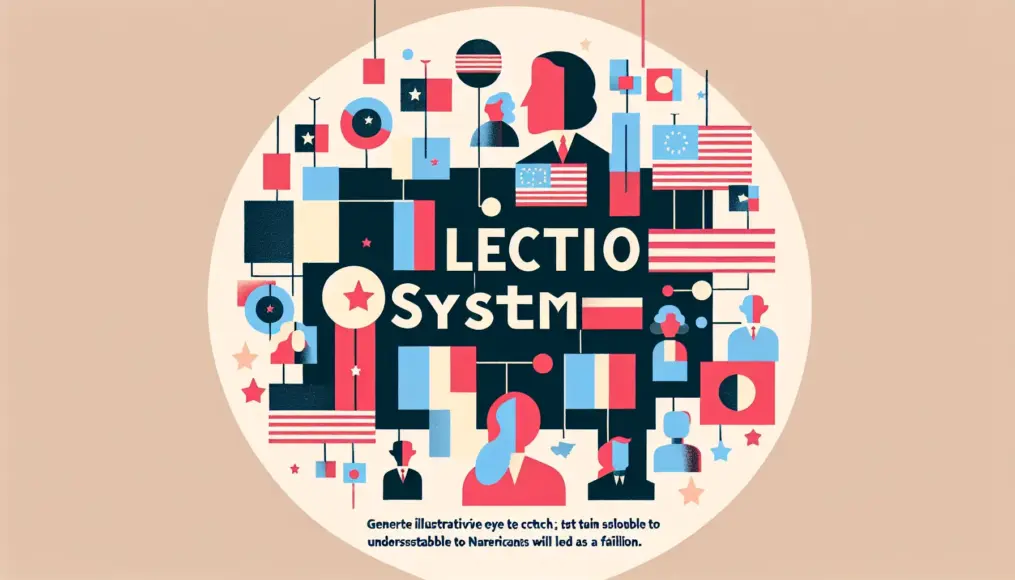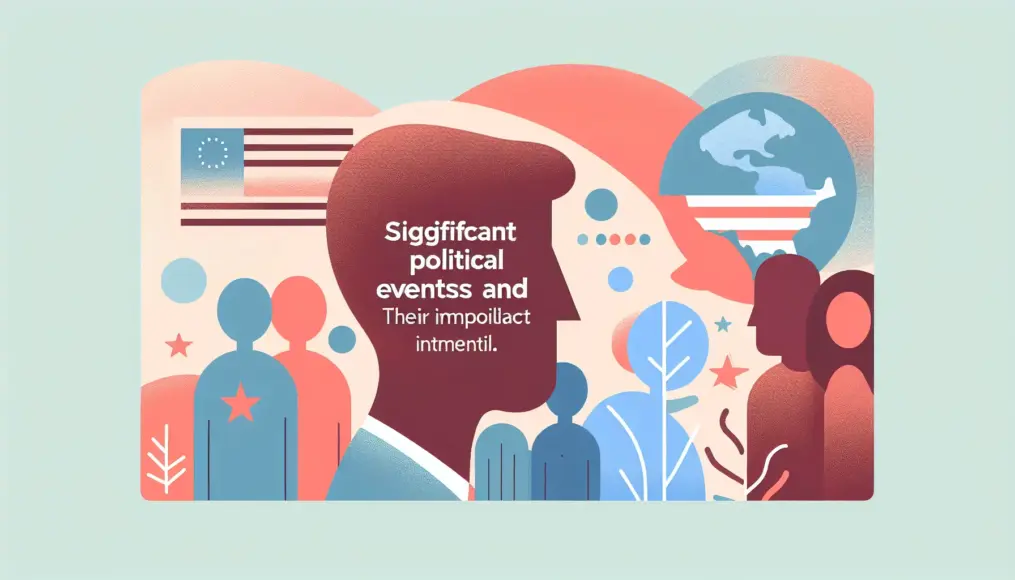The parallel voting system, which combines single-member districts with proportional representation, is one of the most intriguing electoral frameworks out there. Gaining a better understanding of this system could enhance our political engagement and interest in elections. By delving into how this system was established and how our representatives are chosen, we can uncover the deeper context behind it.
In this article, we will explore the fundamental concepts of the parallel voting system, highlighting its advantages and disadvantages, reviewing its performance in past elections, and contemplating future prospects. Why not take this opportunity to deepen your understanding of politics and consider how we can improve our electoral processes?
- We’ll explain the basic concepts of the parallel voting system.
- We’ll take a closer look at the pros and cons of this electoral framework.
- We’ll reflect on past election outcomes and think about what’s next.
What is the Parallel Voting System in Japan?
The Parallel Voting System, also known as the Single-Member District and Proportional Representation System, plays a significant role in how representatives are elected in Japan. Understanding this system is crucial for grasping voting behavior and civic engagement during elections. By learning how it works and why it was implemented, we can deepen our understanding of politics in Japan.
Understanding the Basics
The Parallel Voting System combines the single-member district approach, where candidates are elected in specific electoral districts, with proportional representation, which allocates seats based on the total number of votes received across the nation. Under this system, one representative is chosen from each district, while the overall distribution of seats is determined by the proportion of votes each party receives. This dual approach aims to enhance electoral fairness and ensure that a variety of perspectives are represented in the legislature.
Thanks to this system, election outcomes can reflect a broader range of opinions. While the complexity of the electoral process may be daunting, comprehending the fundamental concepts can increase interest in participating in elections.
- A voting system that combines single-member districts with proportional representation
- The method of selecting representatives has diversified
- Aiming for fairer representation in election results
Background and Purpose of Implementation
This system was introduced in 1994 as a replacement for the former multi-member district system. In the past, this system made it challenging for candidates to garner enough votes, often leading to election results that favored a limited number of parties or candidates. To address this issue, the Parallel Voting System was adopted with the intention of allowing a wider array of opinions to be reflected in politics.
The primary objective of implementing this system was to enhance the fairness of the electoral process and restore citizens’ trust in politics. With election results that more accurately represent the electorate, it is expected that civic engagement will increase, ultimately strengthening democracy.

If you found this article interesting, you might also enjoy reading “Considering the Future of Constitutional Amendments and Referendums!.” This article explores the historical background and political implications of constitutional amendments and referendums in Japan, helping to further your understanding of the electoral system.
- A new electoral system introduced in 1994
- Established to address the issues of the previous multi-member district system
- Aiming to promote civic engagement and strengthen democracy
Pros and Cons of the Electoral System
The parallel voting system, which combines single-member districts with proportional representation, plays a crucial role in our elections. However, it’s important to note that this system comes with both advantages and disadvantages. In this section, we’ll take a closer look at how this system enhances representation and reflects citizens’ opinions, while also considering the complexity it introduces to the electoral process. By understanding these aspects, we can gain insight into how our voting behavior may be influenced.
Enhanced Representation
One of the main advantages of the parallel voting system is its ability to improve representation. By selecting one representative per electoral district, the voices of local communities are more likely to be heard. Additionally, the proportional representation aspect ensures that other parties and candidates receive seats in the legislature based on their share of the vote, increasing the opportunities for diverse opinions to be discussed in parliamentary debates.
As a result, minority viewpoints are more easily integrated into the political conversation, allowing a broader range of people to engage in the political process. This is a fundamental element that supports the essence of democracy.
- Local voices are more likely to influence politics.
- There are more opportunities for diverse opinions to be discussed in the legislature.
- Minority viewpoints are expected to be represented in political discourse.
Complexity of Elections
On the flip side, the parallel voting system has its drawbacks, one of which is the complexity it introduces to elections. With this system, voters not only select candidates from their districts but also engage with proportional representation, which can lead to confusion about the voting process for many people.
Furthermore, understanding the policies of individual candidates and parties requires gathering information, which can be challenging. When this becomes difficult, there is a risk of decreased interest in elections and potentially lower voter turnout. To make elections easier to understand, it is essential for us to put in our own effort as well.
- The voting process can feel complex and confusing.
- Gathering information is necessary, making understanding time-consuming.
- There is a risk of lower voter turnout, so vigilance is important.
Achievements in Past Elections
Since the introduction of the parallel voting system, our elections have seen a variety of achievements. In this section, we’ll reflect on how the system has functioned through lessons learned from both successes and failures. By understanding these outcomes, we can gain insights into potential improvements for future electoral systems and our voting behaviors.
Analyzing Success Stories
Since the implementation of the parallel voting system, several success stories have emerged. For instance, in the 2005 House of Representatives election, local voices were better represented, allowing diverse political parties to secure seats. This outcome stimulated political discourse and created an environment where a wider range of opinions could be shared.
Additionally, the proportional representation aspect of the system ensures that seats are allocated based on the number of votes received, making it harder to overlook minority opinions. As a result, policies that cater to the needs of the public are more likely to emerge. These success stories serve as strong examples of the system’s effectiveness.
- Diverse political parties gained seats in the 2005 House of Representatives election
- Local voices have become more reflected in politics
- Political discourse has been invigorated, leading to policies that address citizens’ needs
Lessons from Failures
On the flip side, there are also valuable lessons to be learned from failures within this system. For example, in the 2014 election, some parties with fewer votes were unable to secure any seats in certain districts. This highlights a situation where the system of selecting a single representative from each district may not fully capture the overall public sentiment.
Moreover, election results can sometimes skew in favor of certain parties. Such outcomes reveal the system’s imperfections and underscore the need for further improvements. By learning from these failures, we can work towards making our electoral system better in the future.
- In the 2014 election, there were instances where parties with fewer votes could not secure seats
- The selection of a single representative per district may not adequately reflect the overall opinion
- The need for improvements in the system’s imperfections has been highlighted
Future Prospects for Electoral Reform
The current mixed-member electoral system has achieved a lot so far, but there’s a growing consensus that further reform is needed for our voting process. In this section, we’ll explore how these reforms can be implemented and how to encourage greater civic engagement. By considering these perspectives, we can better understand how we can actively contribute to a more effective electoral system.
The Need for Reform
Electoral systems should evolve with the times. The existing mixed-member proportional representation system has its flaws, particularly the issue of election results favoring certain political parties disproportionately. To better reflect diverse voices, a reassessment of the system is essential. For instance, revising electoral districts and improving seat allocation methods could lead to fairer elections.
Moreover, public understanding and support are crucial for any reform of the electoral system. It’s important for citizens to grasp the significance of these changes and for mechanisms to be in place that allow their opinions to be reflected. This understanding can boost interest in elections, encouraging more people to engage in the political process.
- Electoral systems need to adapt to the times.
- Reassessing the system is key to ensuring fair elections.
- Public understanding and support are essential for reform.
Fostering Civic Engagement
To improve the electoral system, promoting civic engagement is vital. For citizens to have their voices heard in politics, active participation in elections is a must. Beyond just voting, engaging in local political activities and discussions can deepen one’s understanding of politics, helping individuals see how their opinions can make a difference.
Additionally, enhancing education and information dissemination is crucial for fostering civic participation. By increasing opportunities to learn about electoral systems and the political framework, we can clear up misconceptions, making politics more appealing to a broader audience.
- It’s important for citizens to reflect their opinions in politics.
- Participating in local activities deepens understanding.
- Education and information dissemination are key to promoting civic engagement.
Conclusion
Hopefully, this article has helped deepen your understanding of the parallel voting system combining single-member districts and proportional representation. This system plays a crucial role in reflecting diverse opinions within our elections. While it promises increased representation and encourages citizen participation, it also presents challenges such as electoral complexity and systemic imperfections. There’s a lot we can learn from past elections, and as we look toward future reforms, it’s essential for us to be aware of our own political engagement.
To improve our electoral system going forward, it’s vital for each of us to have our own opinions and actively participate. Armed with this knowledge, let’s make sure to voice our thoughts and vote proactively in the upcoming elections.
- The parallel voting system reflects diverse opinions.
- The system has both advantages and disadvantages.
- Citizen participation leads to improvements in the electoral process.
As we approach the next election, don’t hesitate to make your voice heard. Also, if you have any thoughts or questions about this article, feel free to share them in the comments!


Comment